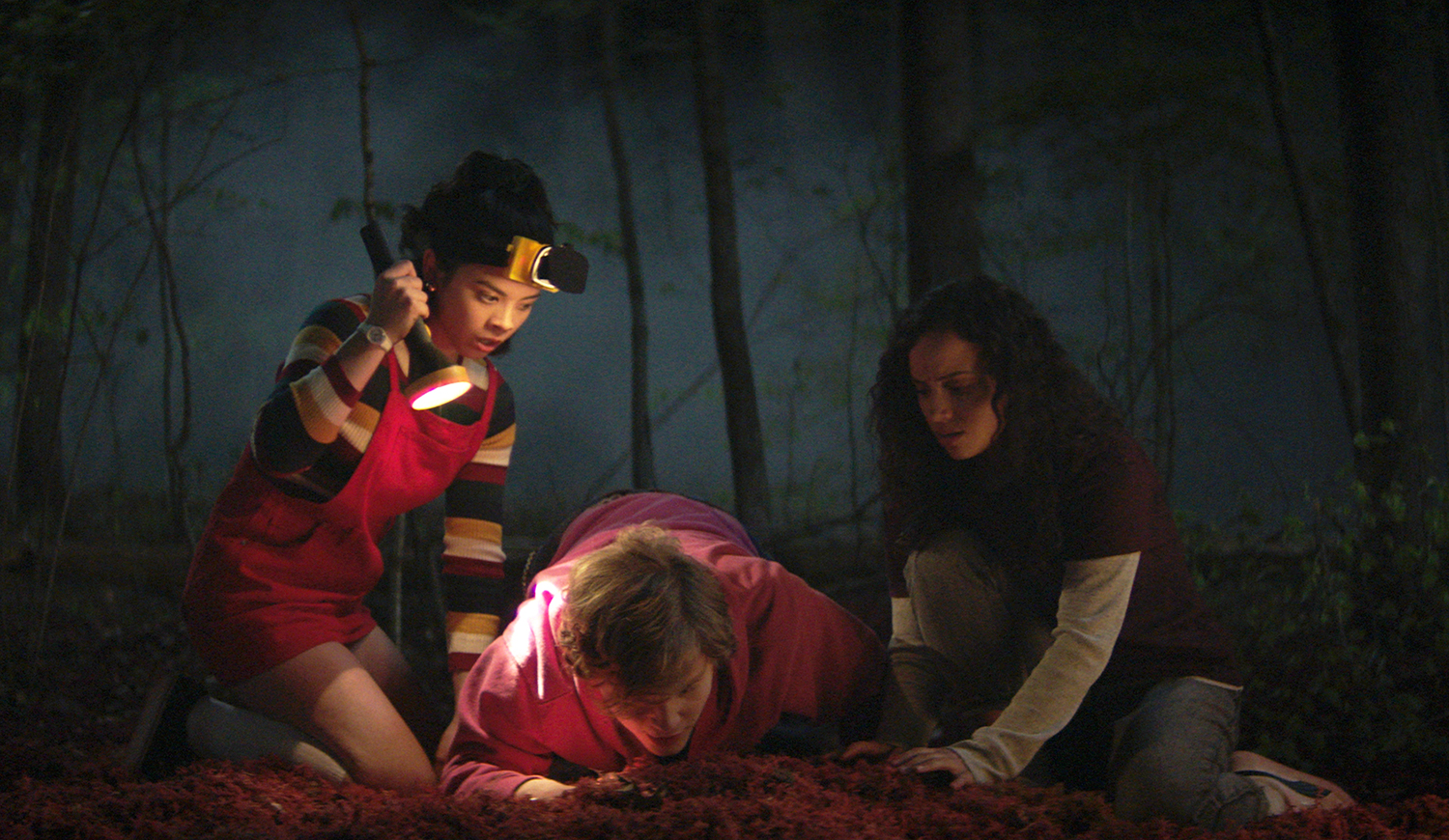‘Fear Street: 1994’: Would a Bread Slicer Actually Carve Someone’s Head? Scientists Investigate
Some Fear Street fans may never look at bread the same way again. The first film in the Netflix trilogy, Fear Street Part 1: 1994, featured a pretty gruesome yet creative kill: a head through a bread slicer. Yuck.
Even after the release of Part 2: 1978, that bread slicer kill seems to have held up as the craziest one yet. But was it realistic? For many fans, it seemed hard to believe that a bread slicer could have that much power. Thankfully, science was here to provide an answer.
[Warning: The following story contains spoilers for Fear Street Part 1: 1994.]

Here’s how ‘Fear Street: 1994’ created the iconic bread slicer kill
Toward the end of the film, Deena (played by Kiana Madeira), Josh (Benjamin Flores Jr.), Sam (Olivia Scott Welch), Kate (Julia Rehwald), and Simon (Fred Hechinger) head to the grocery store for a showdown with the Shadyside killers. Unfortunately, Kate becomes the victim of Fear Street: 1994‘s most violent kill. The Shadyside Mall killer stabs her in the stomach with a knife and then finishes her off by pushing her head through the bakery’s bread slicer.
During Collider‘s The Witching Hour podcast, Fear Street director Leigh Janiak explained how the team put together the gory scene. She revealed that it started with her desire to have the scene take place in a grocery store.
“Part of the fun of the ’90s movie for me was being able to kind of take suburbia and take these places that are really familiar and tear them apart and destroy them, so I loved the idea of being able to be in the grocery store,” Janiak said.
She continued to explain that she wanted to show Kate’s blood mixed with cake. So, she had the character’s face shoved into a dessert before going through the slicer. The writers came up with the bread slicer idea but wondered if it was actually plausible.
“They were like, ‘I don’t know. This is a little unbelievable,'” she said of the film’s art department. “And I was like, ‘It’s f—ing cool, so we’re gonna do it!’ And then they bought a bread slicer. They wanted to prove me wrong, so they had this idea that they were gonna throw watermelons through this bread slicer, and they were convinced that it wouldn’t work, and the watermelon just went right through.”
Scientists recreate the bread slicer scene to test its strength
When it came to filming the scene, Janiak explained to Netflix Film Club that they used a prosthetic head. The team ran Rehwald through the slicer without its blades and relied on special effects to do the rest.
Would a bread slicer be powerful enough to do that without special effects? Netflix Film Club invited two engineers to put a high-power slicer to the test. They revealed that the slicer had “370 Newtons of force,” but “it takes about 2,300 Newtons to break a human skull.”
To test the machine’s speed, the duo put loaves of bread through it, followed by watermelons and a ballistic gel head. The bread slicer did manage to cut the watermelons, though one of them got stuck in the machine before the process finished.
When it came to the head, the engineers found that the slicer cut through the “skin” and started to slice the skull. However, it didn’t have the clean slices portrayed in Fear Street: 1994. Doing this to someone in real life (which we do not recommend) would likely take a much longer time than shown in the film.
What inspired the gory ‘Fear Street’ trilogy?
Classic horror influences are evident in much of the first and second Fear Street films. Janiak previously revealed that she took inspiration from many iconic horror movies of the ’80s and ’90s, namely Friday the 13th, Halloween, Scream, and Texas Chainsaw Massacre.
“I wanted to still make it feel like a ’70s movie and kind of straddle that Halloween and Texas Chainsaw Massacre vibe while still looking to great ’80s movies like Friday the 13th,” she explained to IndieWire of Fear Street: 1978. “It was really about that, about being able to position in these two different types of slasher movies.”


